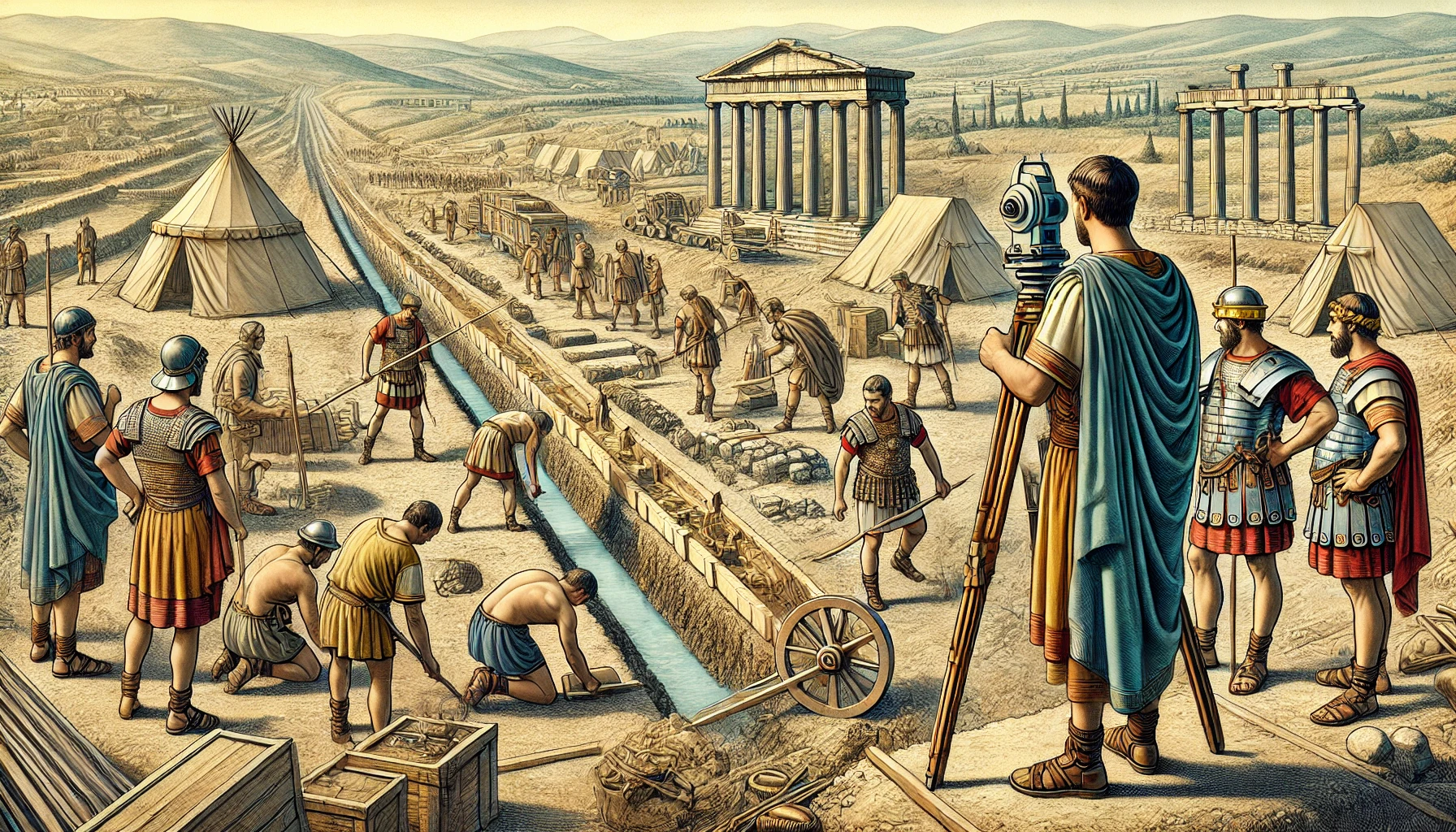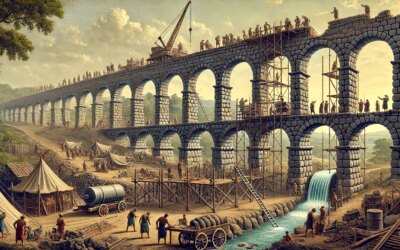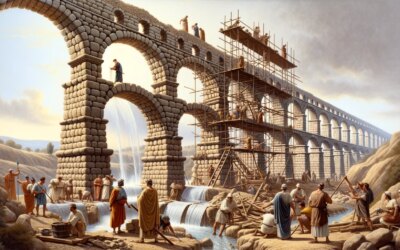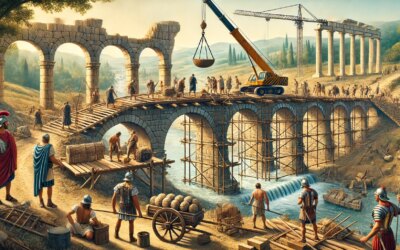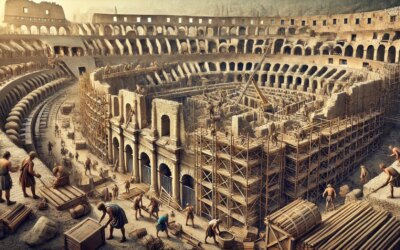Bringing Water to the Empire
Under the Mediterranean sun, teams of workers move in unison. Some haul stones, others mix lime and volcanic ash, while a man in a toga surveys the construction site from a wooden scaffold. He is a Roman engineer—an architectus—guiding the construction of one of Rome’s greatest achievements: the aqueduct. In the 1st century AD, Roman engineers transformed cities and civilizations by mastering the flow of water, turning dry landscapes into thriving urban centers.
The Purpose of Aqueducts
Rome’s population had outgrown its natural water supply by the 4th century BC. Rivers like the Tiber were polluted, and wells could not serve the expanding city. By the imperial period, aqueducts provided clean water to over a million people in the capital alone. These systems also extended across the empire—from modern-day France and Spain to Turkey and North Africa—bringing water to baths, fountains, gardens, and households.
The Role of the Roman Engineer
Roman engineers were trained in both theory and practical construction. Drawing from Greek mathematics and Etruscan techniques, they became masters of surveying, hydrology, and materials science. Engineers like Vitruvius, author of De Architectura, laid out principles still admired today.
Engineers oversaw every stage of construction—from route planning and gradient calculation to material sourcing and final inspection. They worked closely with surveyors (gromatici), builders, and skilled laborers to turn imperial plans into functioning lifelines.
Planning the Aqueduct
Successful aqueduct construction began with identifying a reliable source, usually a spring or highland stream. The route had to maintain a gentle gradient—ideally around 1:4800—to ensure continuous flow by gravity. Engineers used tools like the chorobates (a leveling instrument with a plumb line) and dioptra (similar to a theodolite) for precision surveying.
Where possible, aqueducts followed the contours of hills. In valleys or uneven terrain, engineers built elevated arcades—those famous series of arches that remain iconic of Roman engineering—or tunneled through mountains using pickaxes and chisels, sometimes from both ends to meet in the middle.
Materials and Techniques
Roman aqueducts were constructed with a mix of stone, brick, and concrete. The Romans pioneered opus caementicium, a robust hydraulic concrete that set underwater and resisted erosion. Channels were lined with waterproof mortar (opus signinum) made from crushed tiles and lime, preventing leaks and mineral buildup.
Construction methods varied by region and terrain. Some aqueducts, like the Aqua Claudia, ran above ground on tall arches; others, like the Aqua Appia, were entirely underground. Engineers adapted designs to withstand seismic activity, erosion, and seasonal variation.
Managing the Water
Once in the city, water flowed into large cisterns called castella, where it was distributed through lead, terracotta, or stone pipes to various destinations. Flow could be regulated using sluice gates, valves, and stopcocks, some operated manually, others through float mechanisms.
Public fountains (nymphaea), bathhouses, and latrines were the primary users of aqueduct water. Wealthy homes connected directly to the network—provided they paid a fee and had imperial approval. The rest relied on communal fountains and cisterns.
Famous Aqueducts of the 1st Century AD
The 1st century witnessed the construction of some of Rome’s most famous aqueducts:
- Aqua Claudia (completed in 52 AD): Spanned over 69 kilometers, with majestic arches still visible today.
- Aqua Anio Novus: The highest and longest aqueduct supplying Rome, running in parallel with the Aqua Claudia.
- Pont du Gard (in modern-day France): A stunning three-tiered structure still standing as a UNESCO World Heritage Site.
Challenges and Maintenance
Aqueducts required constant maintenance. Sediment buildup, cracks, and blockages were common. Special officials known as curatores aquarum managed the system, supported by repair crews and guards. Laws prohibited tampering, and imperial edicts punished water theft severely.
Despite these challenges, aqueducts operated reliably for centuries. Some continued to function well into the medieval period—a testament to Roman durability and design.
Legacy of Roman Hydraulic Engineering
The influence of Roman aqueducts echoes across time. Their design principles were adopted during the Renaissance, inspired modern plumbing, and influenced civil engineering curricula. Vitruvius’ writings remain part of architectural theory, and aqueduct remains are studied for their precision and endurance.
Modern infrastructure owes much to the Roman understanding of gravity-fed water systems, material science, and public utility. Rome’s engineers not only built cities—they nourished civilizations.
Water as Power, Flowing Through Stone
In every arch, every channel, and every drop of water that once poured into the Eternal City, the genius of Roman engineering endures. These aqueducts were not merely conduits of water—they were arteries of empire, sustained by the intellect, labor, and ambition of those who dared to make the land yield to their design. And at the heart of it all stood the Roman engineer—surveying the world, and bringing it into harmony with human will.

